The dream is that someone will just give you a Leica. The dream is alive. Well, at least it is not completely dead. I was given a Leica C2 Zoom.
A few months ago, a friend and colleague of mine made an intervention with her mother, who had decided, after sifting through a family member’s collection of things, to keep the Nikon SLR but trash the lesser cameras. A co-conspirator in the visual arts, my friend pointed out that she might know someone who could use these unwanted things. This is how one Monday in June, I found two cameras and several camera-related odds and ends on my desk at work.
One of the cameras was a ridiculously well-built Voigtländer rangefinder from the 1950s. The other was a plastic point and shoot from the 1990s. Of course I will review the plastic point and shoot first. I mean, who wants to hear yet again about quality workmanship from a period before skimping was the rule in camera construction and that we don’t build things anymore, and the country’s going down the tubes, what country, doesn’t matter, all of them, no one bothers anymore and that is precisely why everything sucks and attention spans and Instagram; the internet, kids, the internet! Right? I mean, right?
But even if you do want to hear about such cameras, I trust the Voigtländer will easily survive another hundred years or so. Plenty of time to review that one later on. The plastic point and shoot, on the other hand, will only be good for as long as its electronics keep working. Maybe that’s a hundred years. Maybe it’s a week and a half. Maybe it will surprise us all and become queen of the robots when they finally and inevitably rise. I do not know the future. What I do know is that today, plastic is where it’s at. Love the plastic. Embrace the plastic. You shall worship at its altar. Made of plastic.
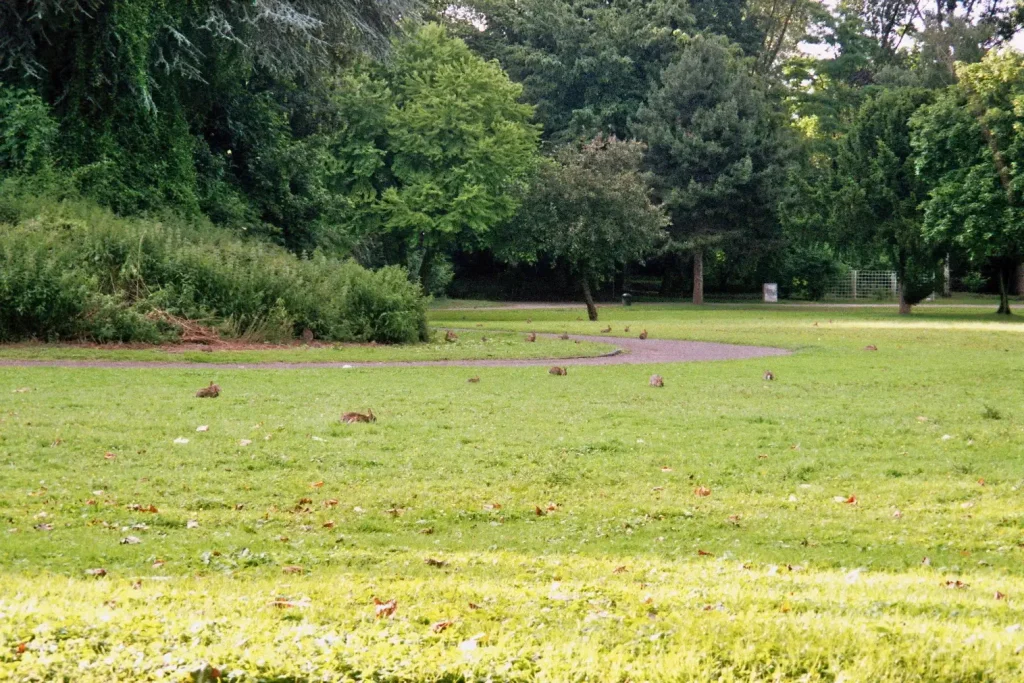
A plastic Leica
My decision in favour of the plastic camera was helped along by the presence of a coveted little red dot with five letters in calligraphic white writing on the camera: Leica. So here I was. Having reached my thirties with most of my faculties intact, having bought and used dozens of cameras, having written about them, having liked and loved some and not others: I had a Leica. A Leica, you guys. The definitive camera of a century. The camera that had changed everything for photojournalism. Made of plastic.
The Leica C2
So the Leica C2 Zoom is maybe not on the same higher plane as a built-to-order Leica MP. It was never meant to be. It was supposed to fill a spot below the M series Leicas in the early 1990s. A spot that at some point had been occupied by the all-too successful Leica CL. The zoom range of the C2 is a clue here: it goes from 40mm, the Leica CL’s standard lens focal length, to 90mm, the focal length of the CL’s other dedicated lens. The zoom starts at an acceptable f3.5 at the 40mm end, but by 90mm only a narrow f7.7 remains. The Leica also came with a real leather bag, which means it’s still a usable bag today, not plagued by the deterioration of whatever cheap material was used that so many other camera bags and cases from the 70s onward have.
FYI: There is a date-back version of the C2 Zoom if you’re inclined to go full-on 90s and put the date on the image area of your pictures. This, while not an altogether bad idea, is usually implemented badly, as it is on the C2 Zoom. If it’s on, it’s always on. That blasted date is on every picture. A smarter way to do this would be do let the camera put a date on the first picture of the day, and then not on subsequent images until the date actually changes. But that’s how I want to use it today, not how people used it in the 1990s. They just had prints made, and the prints got mixed up and given away and you wanted to know on every print what day it was. Because… well, because.

But I digress. I do not have the date-backed C2 Zoom in front of me, I have this information from the manual. But I have no reason to mistrust the manual. I also trust it on another piece of trivia about the date back: its calendar goes until the end of 2019. So hurry up if you want to use that date back, you have three summer vacations worth of date-imprinting left!
Back to the C2 Zoom at hand. The C2’s predecessor, the similar-looking Leica AF-C1, had used a standard 40mm/f2.8 lens and a built-in teleconverter to double the focal length to an 80mm/f5.6. I have not used the AF-C1, but from what I have read the 40mm setting is pretty good, while the 80mm setting is not. Both cameras are essentially Minoltas in disguise. The AF-C1 is a redecorated Minolta AF-Tele Super, while the C2 Zoom is based on the Minolta Riva Zoom 90c. I’ll use the European names for the Minoltas throughout. They have other names in Japan and in the US, if you really need to know, these are a google away. The cameras have the same functionality in slightly differently designed bodies.
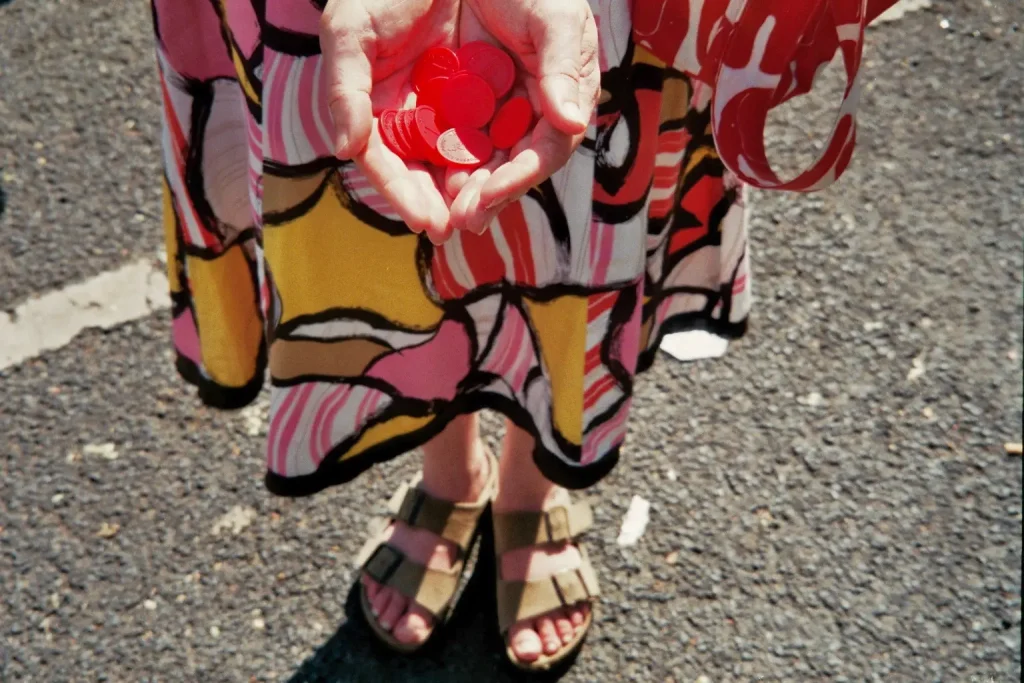
Both Minoltas state a minimum focal length of 38mm while the Leicas list 40mm. I have not taken the cameras apart to check, but I suspect the lenses are actually identical. Two millimeters is well within tolerances to call a lens “40mm” even for Leica when it’s slightly under or over that focal length. And knowing the history of Leica and Minolta sharing lens designs, especially when it comes to zooms, it seems odd that Leica would have insisted to redesign the lens for this point and shoot. They are after all a company which used optical designs identical to Minolta’s and even Sigma’s for some of its R-Series lenses.
Let’s talk specifically about the C2 Zoom, though. First: make note that we are talking about the C2 Zoom, which is an entirely different camera from the later Leica C2. The C2 is sleek and somewhat coveted. The C2 Zoom on the other hand, appears bulbous and whale-like. It’s not unlikable, though. The C2 Zoom in one word is “eccentric.” It’s eccentric-looking, and it’s eccentric in operation. Before you can operate it, find a battery. The camera takes a relatively common 2CR5 lithium battery found also in, for example, many of Minolta’s Dynax/Maxxum/Alpha SLR cameras. You can even get third-party chargers and rechargeables with which the C2 Zoom will work uncomplainingly.
Auto zoom
Switch on the C2 Zoom. Lift the camera to your eye and point it somewhere. If you point it at a person, you will notice immediately how the Leica tries to be helpful. It automatically zooms in on the face, and crops the image to a supposedly pleasing frame. I am not going to equivocate here: this is inane. It’s one thing for Minolta, makers of the first popular autofocus SLR, the calculator amongst cameras, the Minolta 7000, to think they can take auto everything one step further and save you the trouble of actually framing the photo you want to take. I half understand where they are coming from. I mean, we all have that one relative and/or friend who can’t take a picture to save their life. Think cut off heads, think waaaay too much sky in the background, think every bad photo cliché ever. (And hint, if you don’t know such a person, it’s probably you. In that case: auto-zoom away!).

It is, however, confounding to think that at some point in what I presume must have been the late 1980s or early 1990s, some Leica executives traveled to Osaka, checked out some of the cameras Minolta was manufacturing for the masses, picked up a Riva Zoom 90c and said “Yup. That one. That’ll do.” You’re Leica, for the love of Cap’n Crunch! If you’re trying to slot something in below the M series for people who cannot afford an M but still would like a Leica, don’t make them regret buying one of your overpriced compacts immediately! Alright. Calming down. So how does auto zoom work? Not very well, thank you. It auto selects the frame if you focus on anything from 75cm to 8m away. Focus farther away, as you would for a panoramic shot, and auto zoom incredibly unhelpfully decides to focus the lens at 90mm. You can see why you may want to learn a routine by which you switch on the C2 Zoom and switch off auto zoom in one fell swoop.
Ah, there’s the good news! This insanity can in fact be turned off by long-pressing the self timer button while moving the zoom lever a bit. The bad news is that it will then only stay off until the camera turns itself off again. This happens after 3 minutes in order to preserve battery, which isn’t just a downer because of the auto zoom setting, but also because you might want to do some street photography, or capture some pictures at a family gathering without having to turn the camera on again, which might take that extra second that will make you miss the moment. This is (unfortunately) par for the course for these 90s cameras.
Turn the C2 Zoom back on, and hello again, auto zoom! This is the second bad design decision made on the C2 Zoom. There is no technical reason why the camera should not remember the state of the auto zoom setting. After all, it remembers whether or not you want it to pre-flash or not between uses after you set this once. (Sadly, it is also not smart enough to remember when you have purposely set the flash to “off” completely.) I understand that the camera’s designers wanted to make it idiot proof, but why have it remember some settings and not others when switched off? That just makes the user experience more inconsistent and confusing, not less.
If you must put in a function that every – even just somewhat – advanced photographer will want to turn off right away, let them turn it off, and let it stay off! Ok. You’re probably not working there anymore. Leica or Minolta. I mean, Minolta doesn’t even make cameras anymore. You’re all probably retired, you once potent decision-makers in the camera world. Now you are surely sitting at home with all you money and your gold-plated special edition cameras and expensive watches in glass display cases and surrounded by diplomas and grandchildren and a huge garden where you tend roses. So I’m likely not getting through to you. Still. You couldn’t have given this five seconds more thought?
Then again, if you’re interested in philosophical photo experiments that deal with the precarious position of the individual in modern society, you could also shoot with auto zoom always on, letting the camera frame the picture and taking yourself out of the equation. Then you can eruditely question how we as humans can actually act at all, and maybe you want to drag ye olde free will debate into this as well. “I took this picture! Or did I?” I’m sure you can find a friendly neighbourhood hipster café to exhibit such images as “dereliction of auctorial authority.” The red-headed barista with the Warby Parker glasses is sure to dig that. Hey. Wait. That sounds great! I have a new photo project!

So ok. I’ve ranted to my heart’s content. But now I have a confession to make: auto zoom is no issue at all if you are willing to spend about seventeen seconds with a pair of scissors, and invest the equivalent of about zero point zero two cents on a tiny sliver of black gaffer’s tape or electrical tape. Stick that in front of the small sensor right above the viewfinder that wants to turn on autozoom whenever it sees your face coming at it. The display will still read auto zoom, but since auto zoom is only activated by that sensor, and the sensor is now snow blind, it will not actually zoom. Yes. This is a minor thing. Why was I so riled up? Still, I believe the only time you should have to take tape to a Leica is when you want to black out the “Leica” logo on its front. This I didn’t do. I mean, I have a Leica here, please act accordingly, world!
The lens
Now let’s look at what you will be taking pictures through. The lenses are why you buy a Leica, I’m told. The lens on the C2 Zoom, under the right cirucmstances, is good. It’s actually quite nice for a zoom lens from a 90s compact. Which is faint praise, I know, but you are not seriously reading this review to decide between a new Leica M7 and this C2 Zoom, are you? So this frame of comparison is not entirely arbitrary. Not as arbitrary as that blasted auto zoom, anyway. I don’t know what the point would be in trying to measure the lens quality in any rigid manner. If I told you it’s fine stopped down two stops but not wide open, what could you really do with this information on a camera that doesn’t let you set anything?
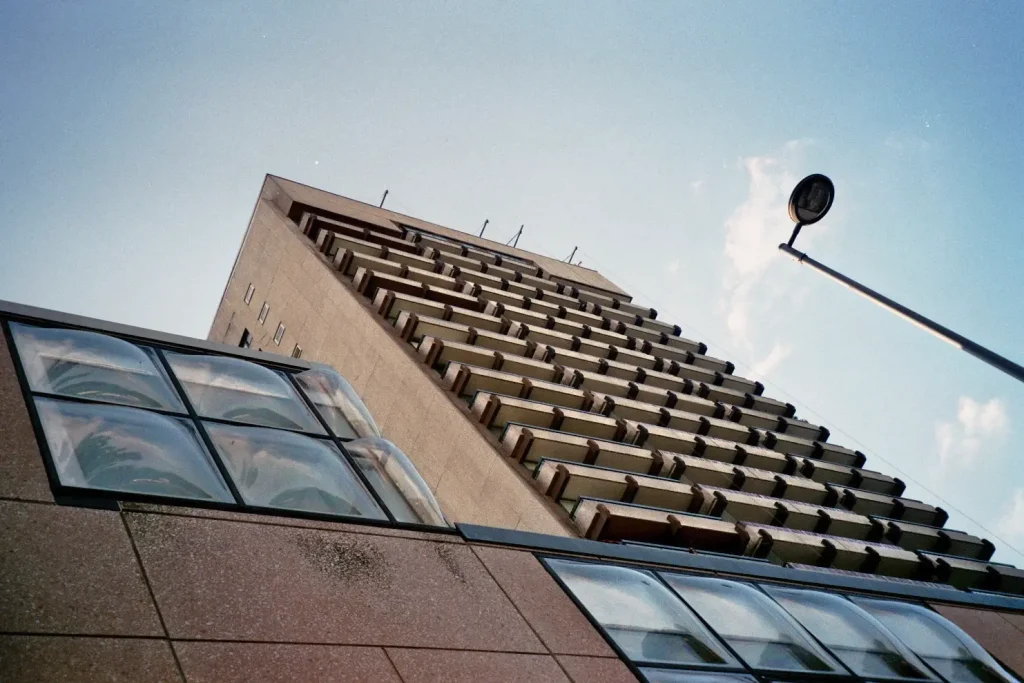
I do tend to like lens rendition from compact Minoltas, and the C2 Zoom appears to pretty much behave like they do. The lens is fine at the wide end. When something wasn’t as sharp as I wanted it to be, it was either my fault, or the autofocus system’s, which somehow managed to miss a few shots even in broad daylight. This is forever my gripe with autofocus point-and-shoots: you usually don’t know where it’s focusing, and thus have very little say in the matter. Old rangefinders are perhaps slower in some circumstances, but the pictures you do take, provided you know what you are doing, will be in focus where you wanted them to be. But that’s not the lens’s fault. It’s sharp at the wide end. The edges are a bit soft, but not so much that I found it disturbing, as I did with the Canon AF35ML. The picture quality at the wide end almost rivals my Minolta Riva Mini’s little 35mm prime lens. It is quite similar in character, as a matter of fact.
At any focal length, the C2 Zoom flares. It’s a compact from the 1990s. It has no lens hood. It will flare. I find that not a huge deal.
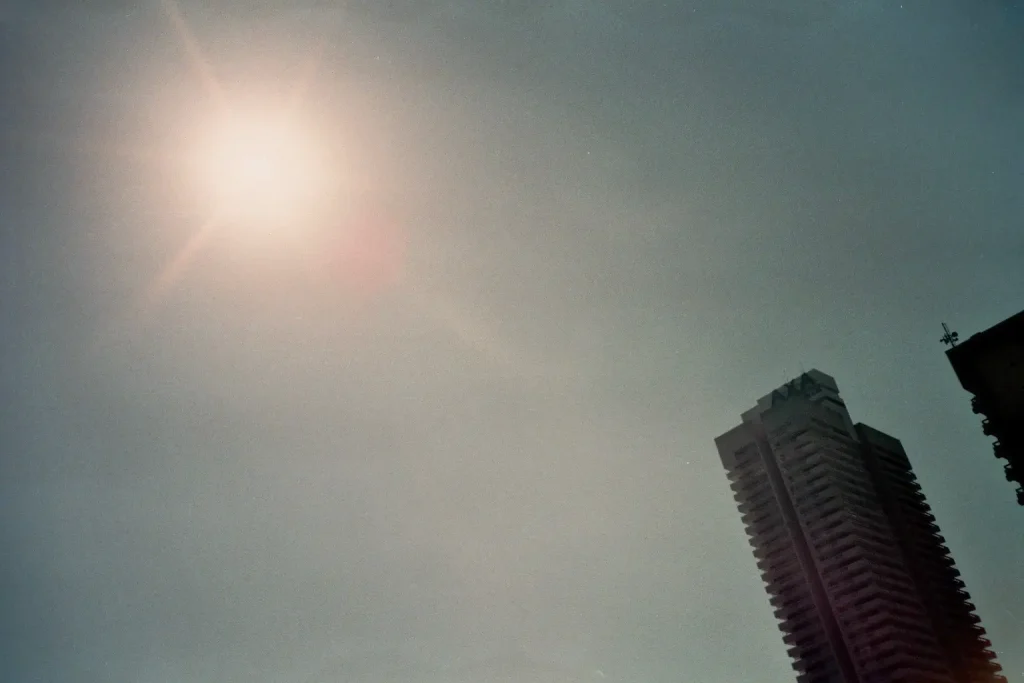
The C2 Zoom’s zoom lens offers a useful range of focal lengths. 40ish millimeters is great for snapshots and street photography. I have a Rollei 35T that can’t seem to take a bad image at 40mm. 40mm is almost perfect. 90mm is also great, it’s likely the longest I would ever need in a compact camera. Your closest focus point is 75cm at 40mm and 90cm at 90mm. This seems workable, certainly as good or better than other non-SLR Leicas. Close focusing and reach are not the problems here. What is the problem is the same problem with all these 80s and 90s compacts. The portrait end of their lenses does not open up enough. On the Leica CL, the 90mm lens goes up to f4. That’s enough for blurred out background for a portrait. It’s not as shallow as depth of field can get, but its good enough. At f7.7, however, the C2 Zoom is not a good candidate for headshots with bokeh.
The only problem with the wide end is, well, it’s not really wide. This bothers me more in concept than in practice. Sure I would like the zoom to go wider than 40mm, or the 38mm it may well be. I would much prefer something like 28mm to 70mm to this not-quite-wide-to-portrait zoom. I would like that. I don’t really need it, though. So far, I have reviewed three fixed lens point-and-shoots for this site, and they all sport lenses from 35mm to 40mm. Whatever complaint I had with these cameras, the lenses not being wide enough was not one of them. I could probably do with just 40mm and 90mm. In fact, on the Leica C2 Zoom I mostly do. My pictures with the C2 Zoom are overwhelmingly taken at either the 40mm end or the 90mm end. Its motor zoom, operated with a little plastic lever, is not very fine-grained when it comes to adjustments. In real world terms, it seems to have about six settings between the two ends. But who needs them?
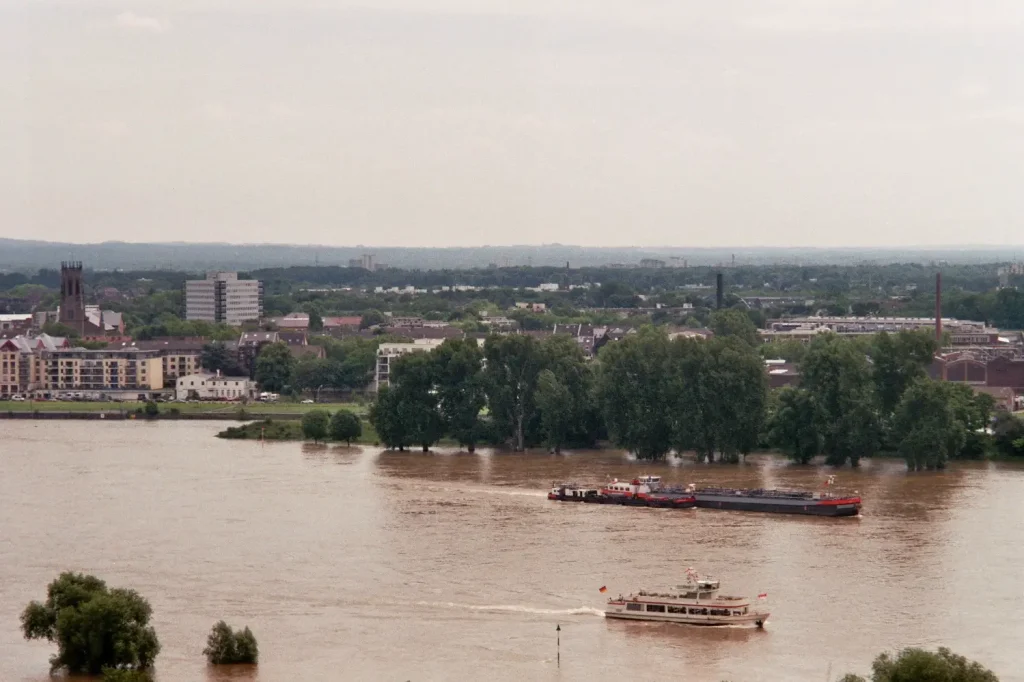
The long end – 90mm – is another story in terms of what you can expect in terms of picture quality. Pictures at the long end consistently lack punch and sharpness, even in the small scans I got back from the lab. In the comparison pictures of the church, you can see that the wide shot is nicely sharp, while the close shot of the window is not.
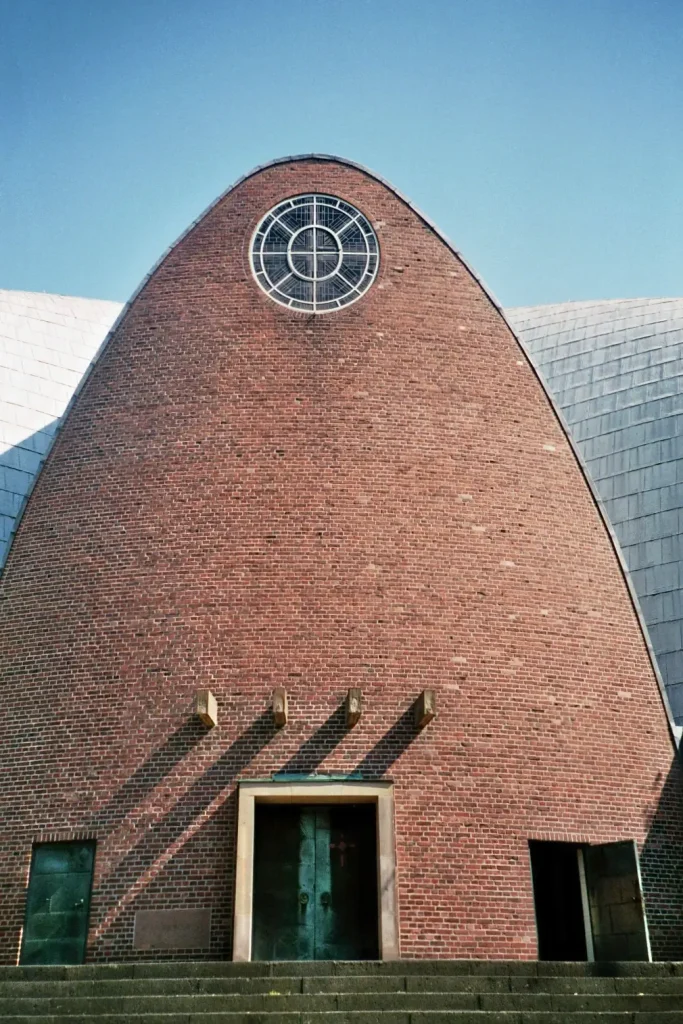
I found the same pattern repeatedly. Wide shot: sharp, punchy, pleasant.
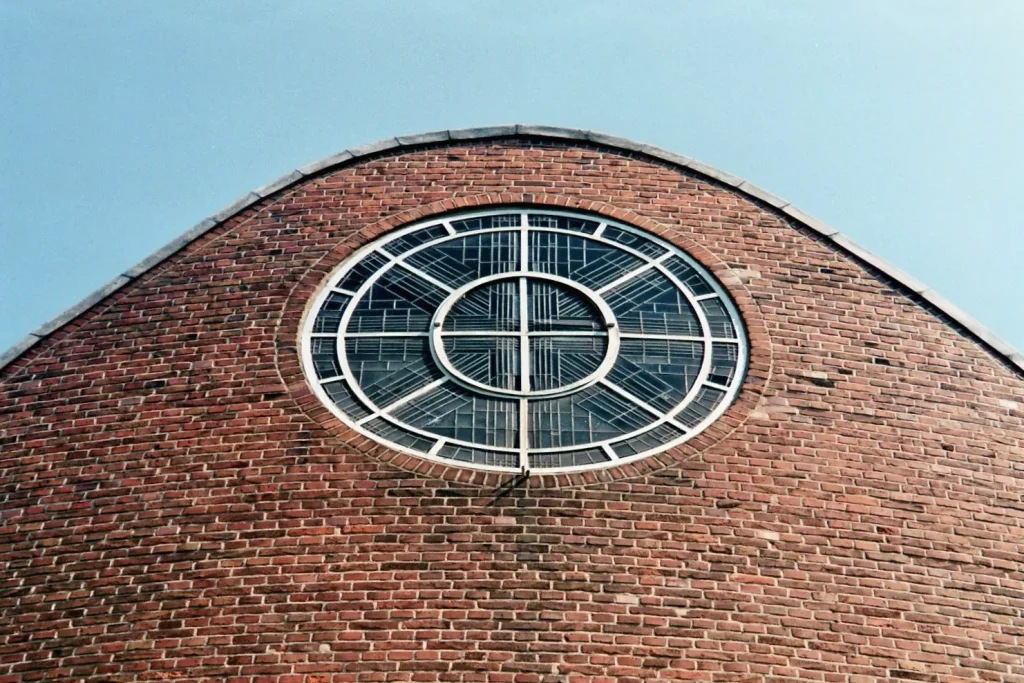
Long shot: meh. Not horrible or unusable. Just: meh. This is a bit frustrating if you consider that the camera auto-zooms to whatever focal length it wants you to use by default. The gist? You can get really good image quality from the C2 Zoom. You just have to actively fight the camera in multiple ways in order to achieve that.

Framing
How easy is it to get in the picture just what you want in the picture? We are not dealing with an SLR and its close-to 100% viewfinder here that lets you carefully compose an image so it does not need to be cropped, and where you want a distinction between 40 and 43 millimeters, between 50 and 55, 86 and 90. No. We are working with a point and shoot camera with sloppy framelines (the manual states 85% at 3m distance). I have a sinking feeling the Minolta engineers who came up with this robot forebear only put auto-zoom into this camera in order to explain why it needed zoom at all. For most purposes, the 2x teleconverter solution of the AF-C1 with improved picture quality would have worked just as well.
Of note here is that the viewfinder of the C2 Zoom shows close to 1.0 (0.95 to be exact) when at the 90mm setting. This would be much more useful at a wider setting, so you can keep both eyes open while quickly framing a snapshot or a street photograph. At 40mm, the viewfinder magnification is only 0.45, however. But if you want close-to-lifesize magnification while shooting portraits at the long end with the Leica, it’s there.
The top shutter speed of the camera varies from 1/250 of a second at the long end to 1/350 at the short end. Should you care? Probably not. Let’s face it, if you aren’t trying to shoot portraits with slide film in bright daylight, this is entirely adequate. Sure, it might force the camera to stop down a little sooner than it might otherwise have needed to, but since you have no control, none, zilch, a big fat zero, over the aperture and shutter speed it picks, you just don’t have enough knowledge over what the camera is doing at any one moment to really care.
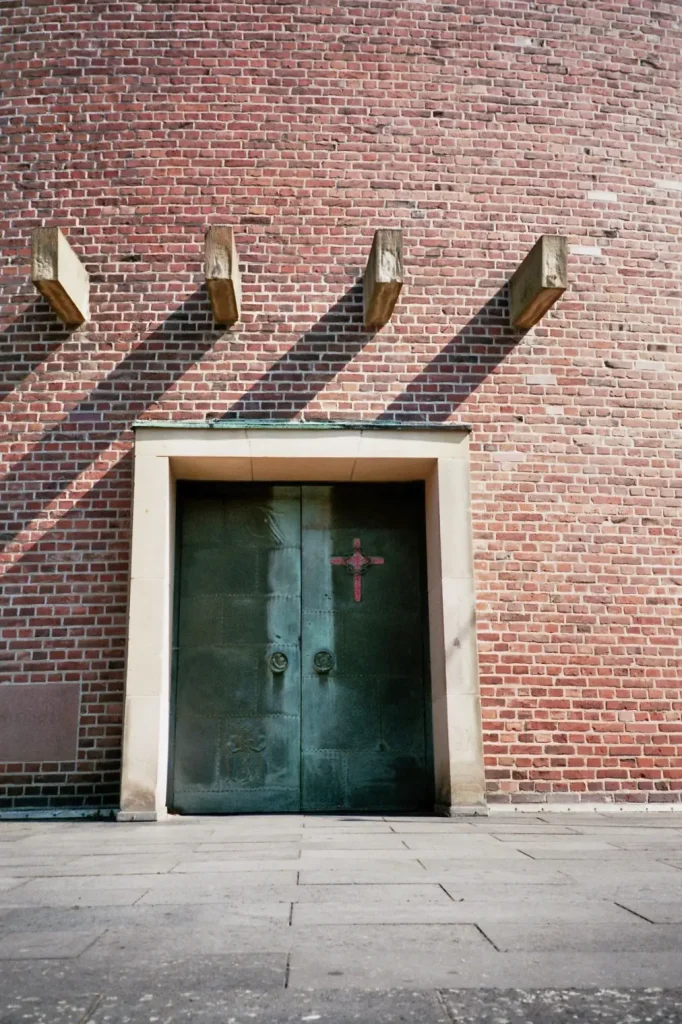
Like the huge majority of 80s and especially 90s point and shoots, the C2 Zoom does not take any filters. So don’t shoot black and white with any expectation of tonal control of the resultant image either. Though you could tape gels to the lens, that lens is protected by automatically activated lens doors and also moves in and out, so this does not seem to me like a long term solution.
The flash
What’s also automatic is the flash, and I suppose you could tape gels to that as well. I didn’t try. I used it for fill flash a couple of times, and I used it as flash flash (i.e. when it was dark) a couple of times. Much as someone who would have picked this camera up in the 1990s would have done. It errs on the bright side of things, but never blew out the picture so much that you couldn’t recover some highlights and make it look at least a bit more natural. It also seemed to only produce a hint of red eye in subjects, not full-blown monster pupils. I suppose I can count that as a plus.
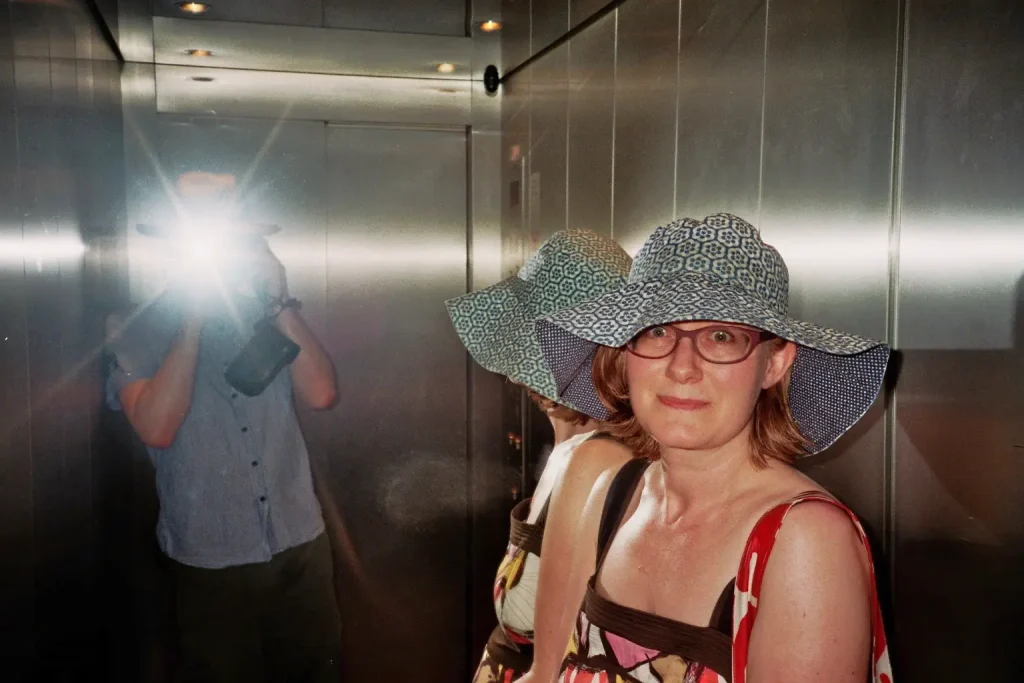
I am, however, it must be said, not a flash guy. I use it when I need to, or when I want to achieve a certain look here and there, but the overwhelming amount of my photography happens handheld and with existing light, damn the shutter blur. When it comes to existing light, by the way, the C2 Zoom is adequate – it’s pretty big and offers a steady grip for handholding, but it neither sports a very fast lens nor is it heavy – but it does not excel at it. Mostly, you’d use it for walking around in daylight and for flashy family and/or party snaps, not, say fly-on-the-wall pictures under the Christmas tree, or theater photography.
DX Reading
Where the C2 Zoom does excel is the number of different ISOs it can set. It’s dependent on automatically reading the film cartridge’s DX code for this, but given a properly coded film, you can feed the Leica anything from ISO 25/15° to 5000/38°. It sets film speed in full stops and sets films in between these as less sensitive. This means that, for example, Portra 160 will be read as ISO 100/21°. ISO 320/26° and 250/25° films would be set to 200/24°, and so on.
This could be useful to know, though the actual circumstances in which you would really act on it do not seem entirely clear to me. The Leica manual mentions the fact that in-between values are rounded down, while the manual for the Minolta does not. Make of that what you will. I made of it that you should not use slide film with the C2 Zoom if that slide film has an odd exposure value. This may have been more of a trip-up in the age of Kodachrome, but all the slide film I use sports “round” ISOs.
Interestingly, both manuals state that you cannot use non-DX coded film. Since most other point and shoots just assume that uncoded film is ISO 100/21°, this seems odd to me. Maybe the camera still defaults to that ISO if you load uncoded film and just doesn’t tell you, but as I have stuck to consumer color film with this camera, I cannot say for certain what it does in that case. Could be that is what finally triggers the rise of our robot overlords, muchly be they praised.
Stick to film that can get good results at box speed and you’ll be fine most of the time. Stick to print C41 film which has a huge overexposure tolerance, and I can’t image you ever having trouble with either the film speed setting or the meager top speed. All my pictures with both print and slide film were perfectly well-exposed except in conditions that might have confused even SLRs of the same era. It thus appears metering is also at least adequate.
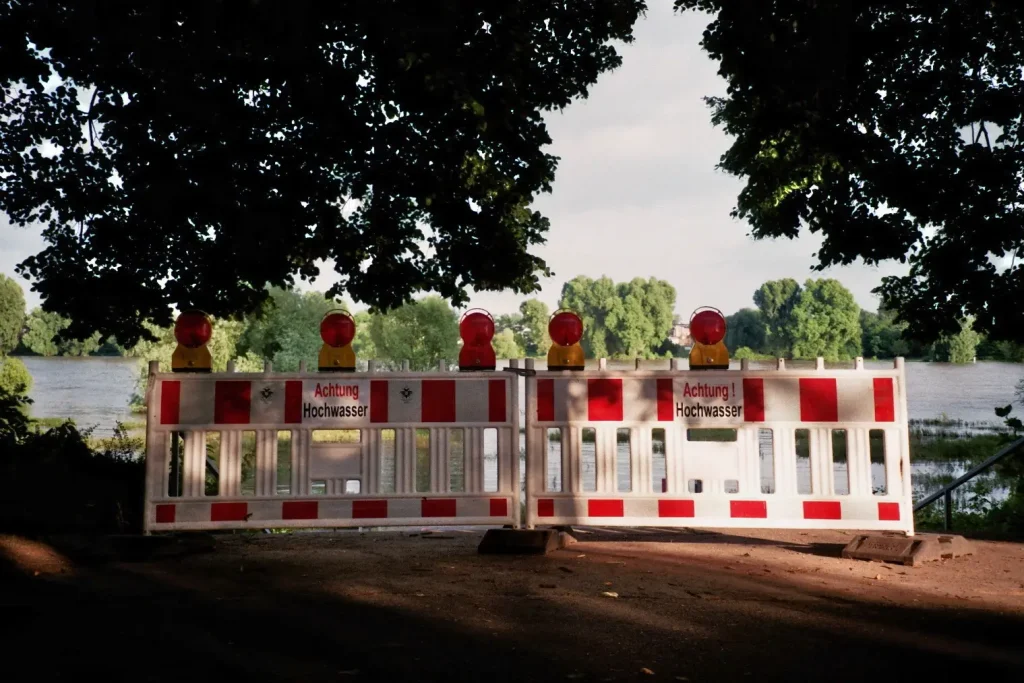
Remote control
The C2 Zoom also originally had a dedicated infrared remote control, one of those mini plastic magic wands that would fire the shutter without you having to touch the camera. Fair enough. Mine didn’t come with the remote. It may not have been part of the original sale, I am not sure if it was optional. It may also have been thrown out in a clean-up because it either had dead batteries, or because no one could remember what the thing was for. I don’t miss it. Self timer (10 seconds) is there if I want to be in the image, and if I’m really going to set up a remote control shot, I’m much more likely to do this with an SLR.
If your C2 Zoom has its remote control still with it, you may want to give it a go. Dead batteries are likely though at this point. Be aware though, that Leica never meant for customers to exchange the batteries in these remotes. You are warned in the manual that customer service should do that. Still, the manual says the batteries needed are — nudge nudge wink wink — 2 3V CR 1220 cells. I have a suspicion Leica service would exchange those batteries still today if you asked them to, but they might look at you funny for bringing in this old plastic piece of their history they probably would rather forget ever existed. If you want to attempt the exchange yourself, well, don’t! Or at least don’t blame me if you electrocute yourself!
If you have the IR remote, you can do some fun things with it. Ok, you can do one fun thing with it. Its functionality doesn’t stop at just triggering a photo, oh no! It has a little switch on it that you can set to take another image after the first image at a random moment after the first one. Get out! Now that is some high tech stuff! Leica claims that this is good for an “unposed” image after the first shot. Maybe. Oh, and just in case you were wondering, auto zoom is automagically switched to “off” when you set self timer/remote mode. Which are the same setting. The camera also does not turn off automatically in this setting. I suppose you could take advantage of this loophole and use your IR remote to have the camera always ready to shoot. This could be good for Lomo, to enable you to shoot from the hip. Yeah, I don’t really think so either.
Conclusions
So, should you buy a C2 Zoom? Well, yes, if you have twenty-odd Euros or equivalent in your pocket that you won’t miss and a soft spot for forgotten cameras. (Hamish wrote about the allure of the cheap “Dad” camera recently. This Leica may not fit that category exactly, but much like the Dad cameras of yore, it can be had inexpensively today). If you like the non-pretty, non-exclusive, non-expensive products of an era when analog was still king but this our very own disposable mass consumerism culture was already in its globalized full swing, buy a C2 Zoom. And, well, don’t, if you would rather own something you can leave your great-grandchildren still in working condition. Either way, I personally would not buy one of these cameras at the “ooh, Leica” asking prices you sometimes see on eBay. In my book, anything South of €30 is too much money invested in something as plastic and breakable as the C2 Zoom, at least when it’s without a warranty.
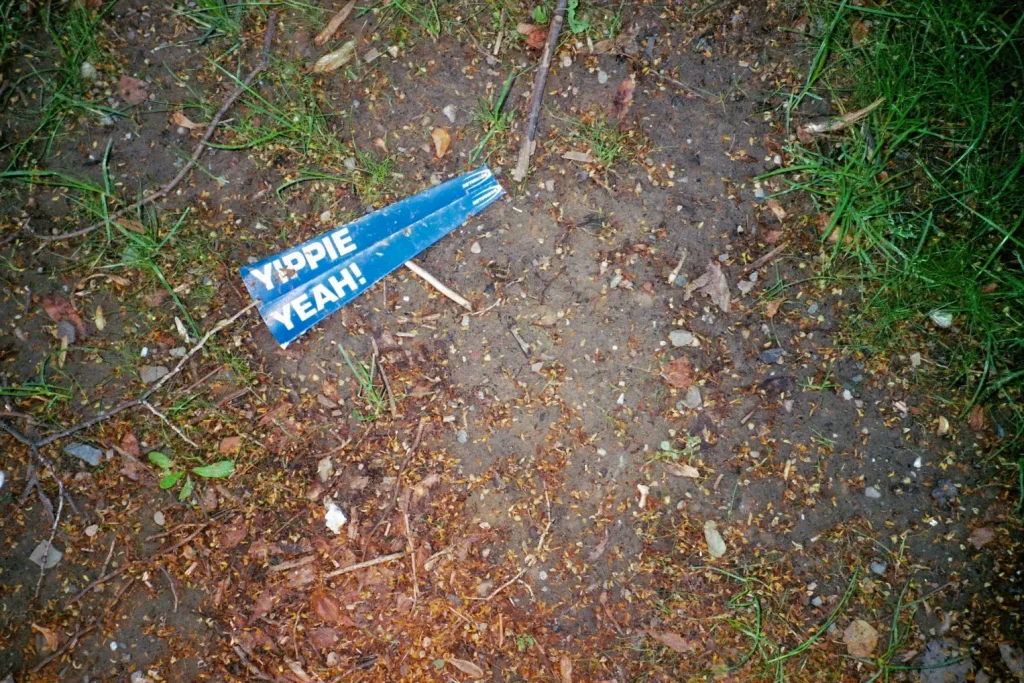
A Leica is not a Leica is not a Leica. Leica lovers will tell you this. You don’t need to ask them. They seem to have a representative always ready to be dispatched to tell someone who just bought a brand new dinky little D-Lux or an used old Leica R SLR or a Leica CL that they can’t claim to be part of the Leica Club. That club is all about rangefinders, about Leica IIIfs or M3s. About things that are clearly very well made and very expensive and possibly involve the number 3. I’m not sure how they communicate, the Leica lovers. I suspect some sort of Leica-branded messaging application you get to download if you have a serial number for a “real” Leica handy. Maybe now that I own an M, someone will tell me. Or maybe not, maybe my old film M is still to lowly. Perhaps I have to buy a new Leica with warranty.
The C2 Zoom is not a “Leica” Leica. It is a point and shoot, all-auto camera from the 1990s that began its life as one of Minolta’s less amazing ideas. Sure, if you want a Leica, any Leica, this will do. If you want just the camera without the branding, get the even cheaper Minolta Riva 90c. Be aware, however: if the C2 Zoom is not one of Leica’s prettiest cameras, the 90c looks worse. Not offensively so, but it wears its ho-hum 1990s design on its plastic sleeves.
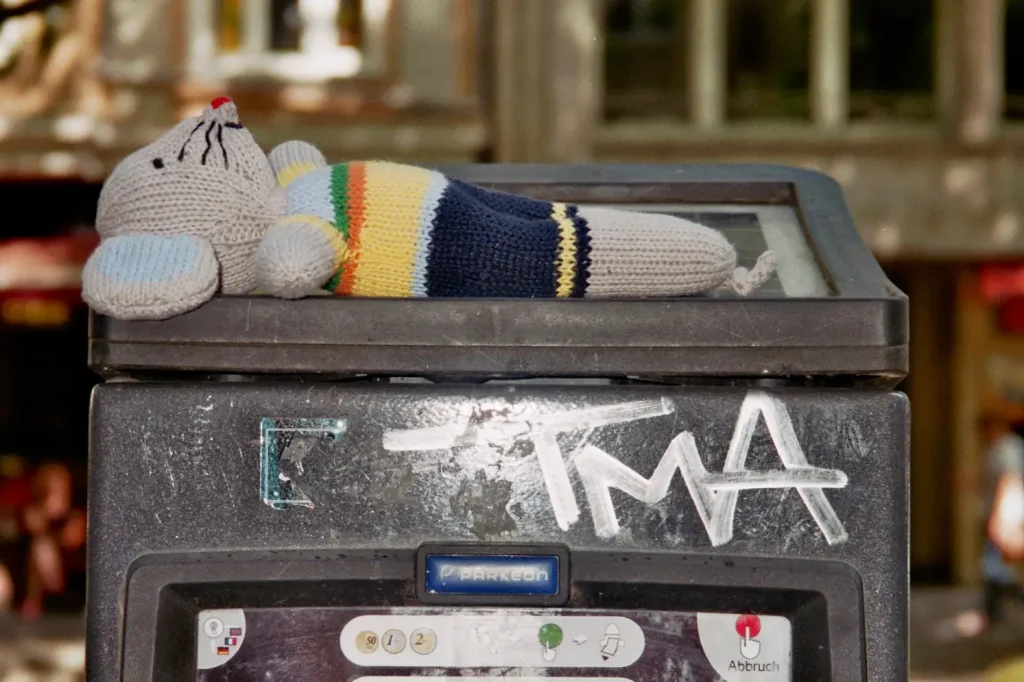
Whatever its failings, the C2 Zoom doesn’t get to wear the Leica dot without any effort. It fits well in your hand, its controls are dead simple to use and well arrayed, and it will let you create pictures with a nicely sharp lens (at the wide end) without much fuss. Bring plenty of rolls of color print or even slide film, and an extra battery, and take it on your next vacation. It will capture all the moments you want to capture. It will be there for boat rides and fireworks and street shots and… maybe not that mountain panorama, you want something wider for that, but still. It will be there for all the rest.
It is, in short, a Leica. Made of plastic.
Share this post:









Comments
Hamish Gill on Leica C2 Zoom Review – A Mind of Its Own – by Torsten Kathke
Comment posted: 26/09/2016
Comment posted: 26/09/2016
Comment posted: 26/09/2016
Des McSweeney on Leica C2 Zoom Review – A Mind of Its Own – by Torsten Kathke
Comment posted: 26/09/2016
Comment posted: 26/09/2016
Frank Lehnen on Leica C2 Zoom Review – A Mind of Its Own – by Torsten Kathke
Comment posted: 26/09/2016
You convinced me NOT to long for this camera and I thank you for not igniting my G.A.S.
Comment posted: 26/09/2016
Dan Castelli on Leica C2 Zoom Review – A Mind of Its Own – by Torsten Kathke
Comment posted: 27/09/2016
I just finished watching the Clinton-Trump presidential debate and I need something to cheer me up. BTW, that waffle looked good.
Dan James on Leica C2 Zoom Review – A Mind of Its Own – by Torsten Kathke
Comment posted: 27/09/2016
Comment posted: 27/09/2016
Comment posted: 27/09/2016
Comment posted: 27/09/2016
Comment posted: 27/09/2016
Comment posted: 27/09/2016
Comment posted: 27/09/2016
Comment posted: 27/09/2016
Torsten Kathke on Leica C2 Zoom Review – A Mind of Its Own – by Torsten Kathke
Comment posted: 27/09/2016